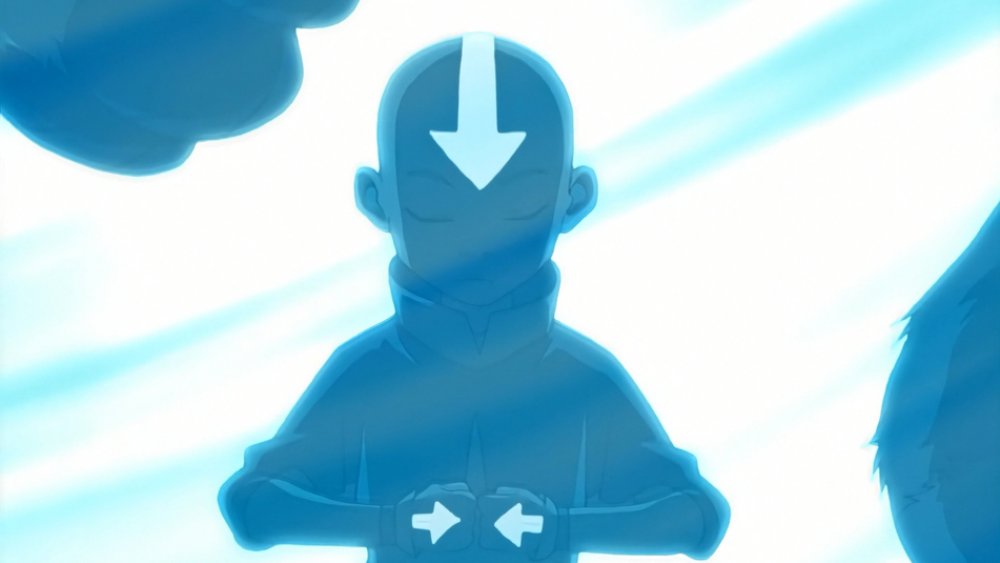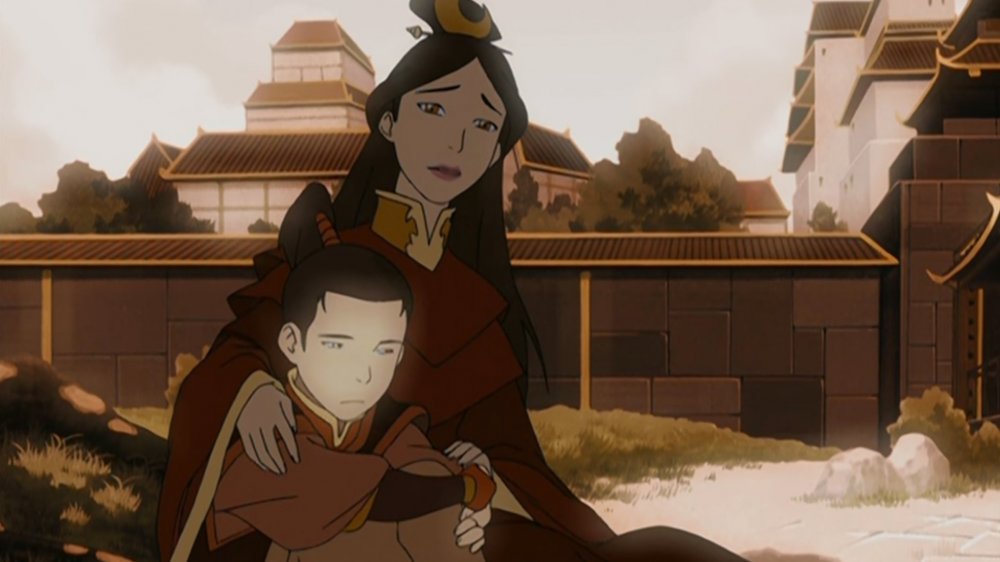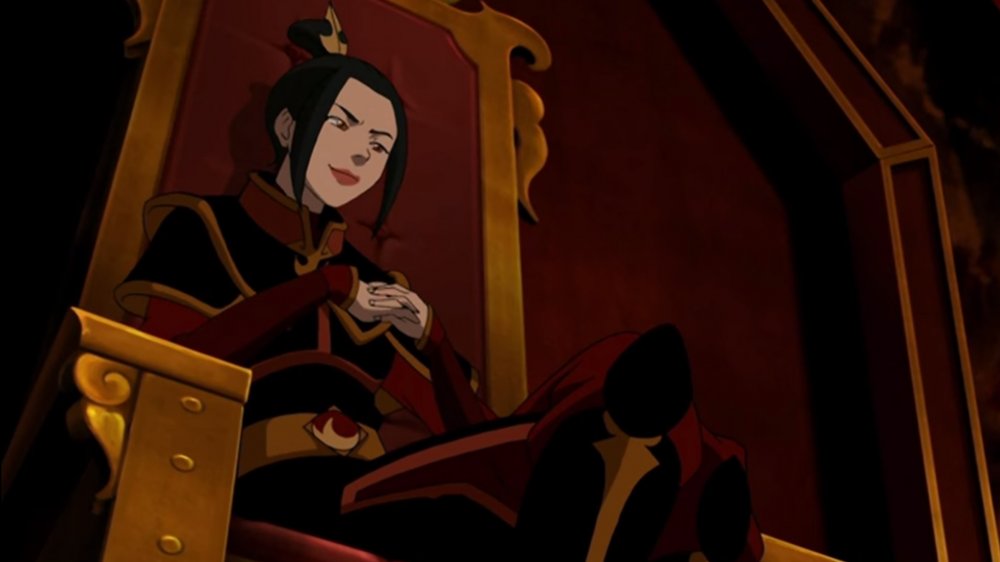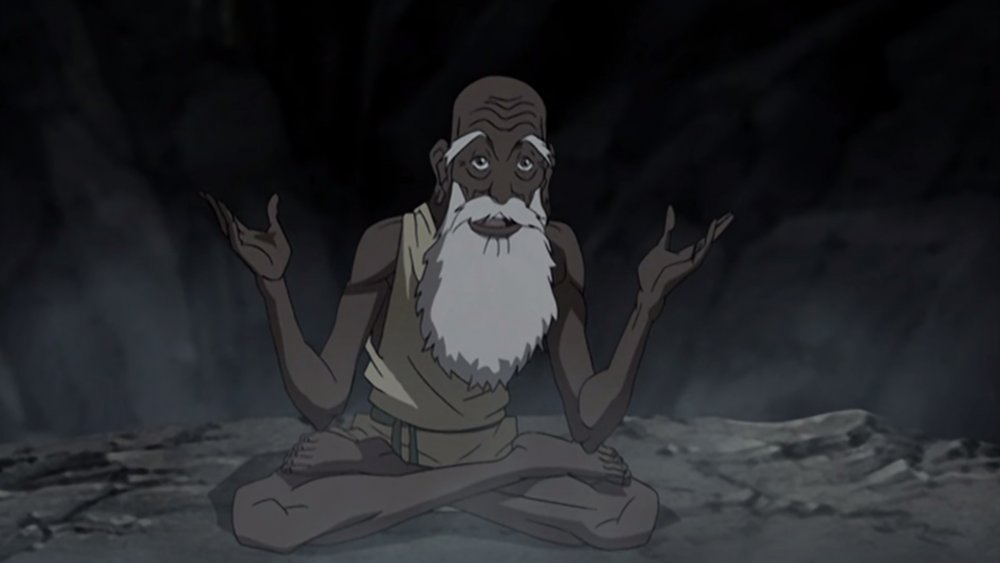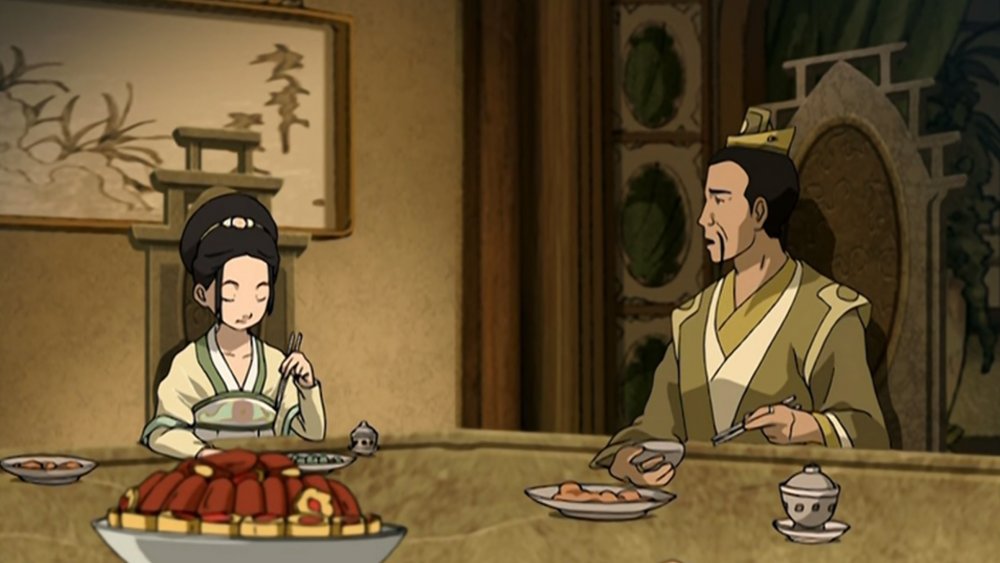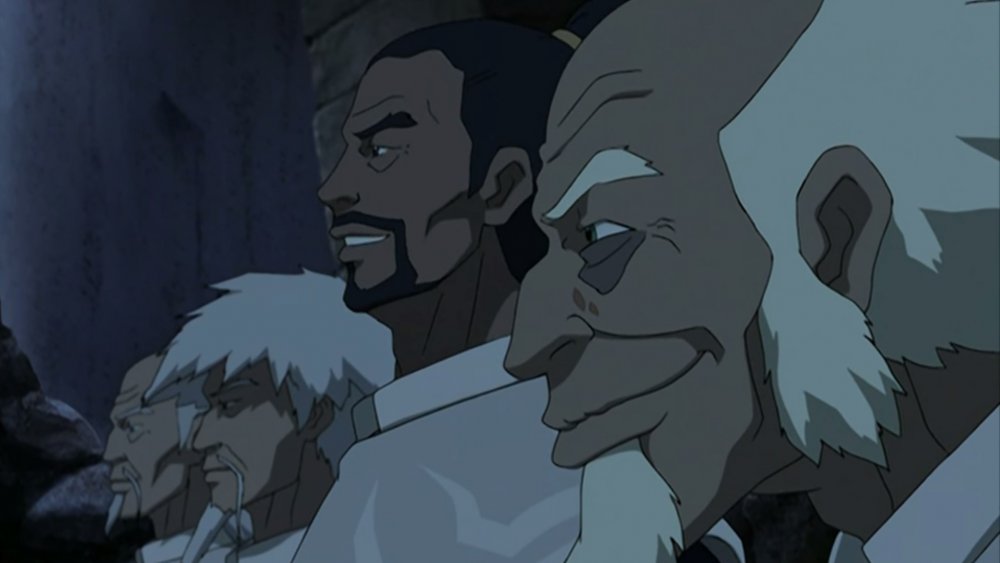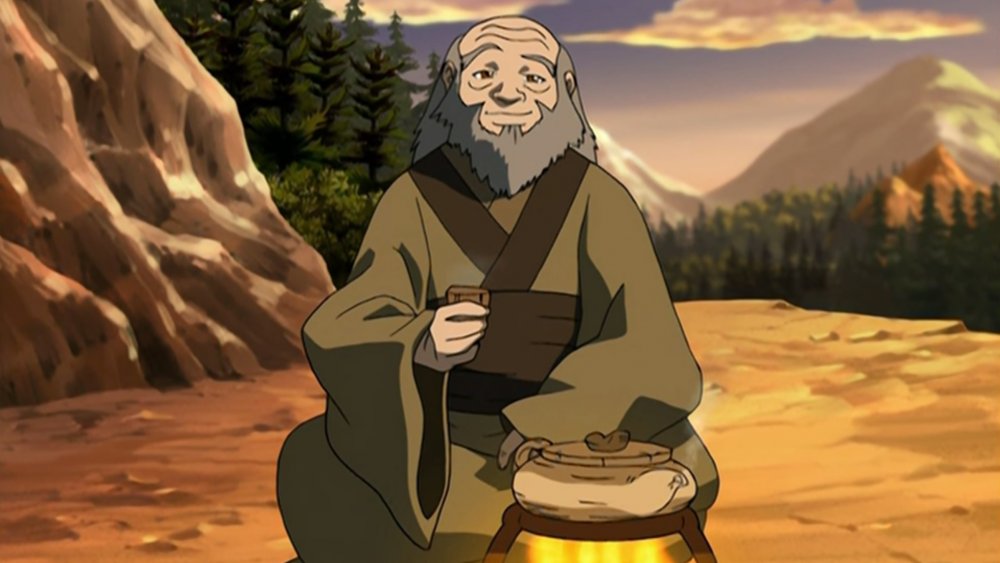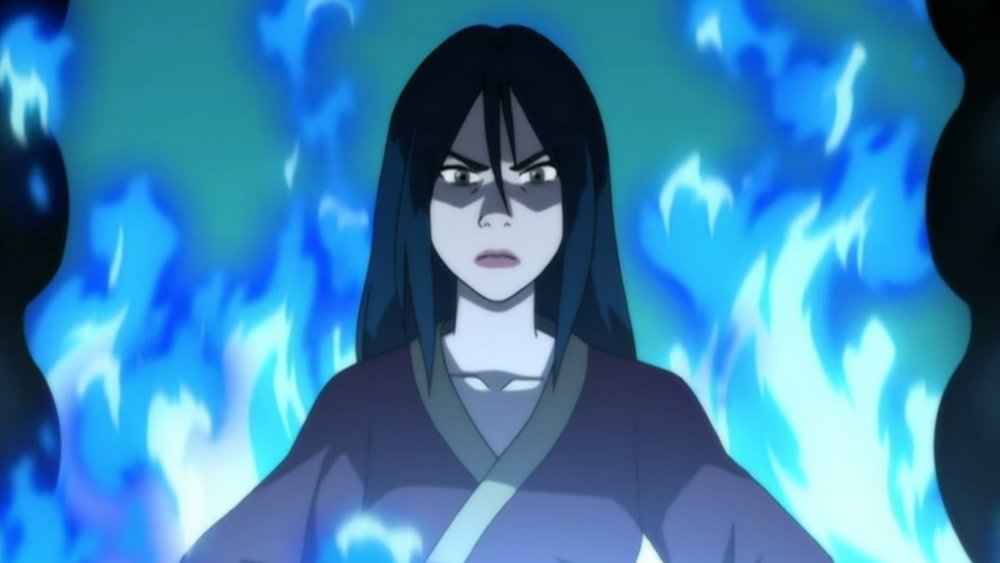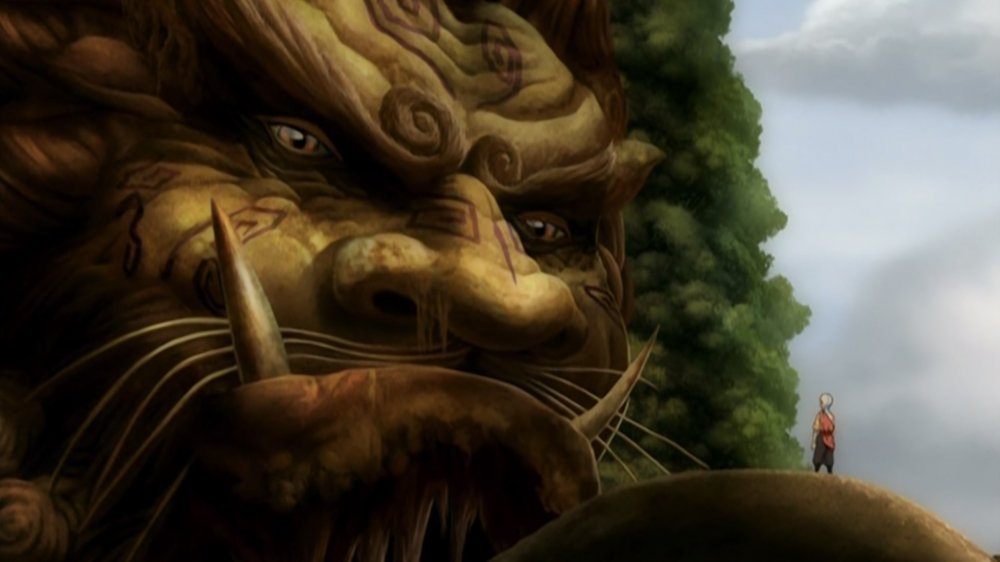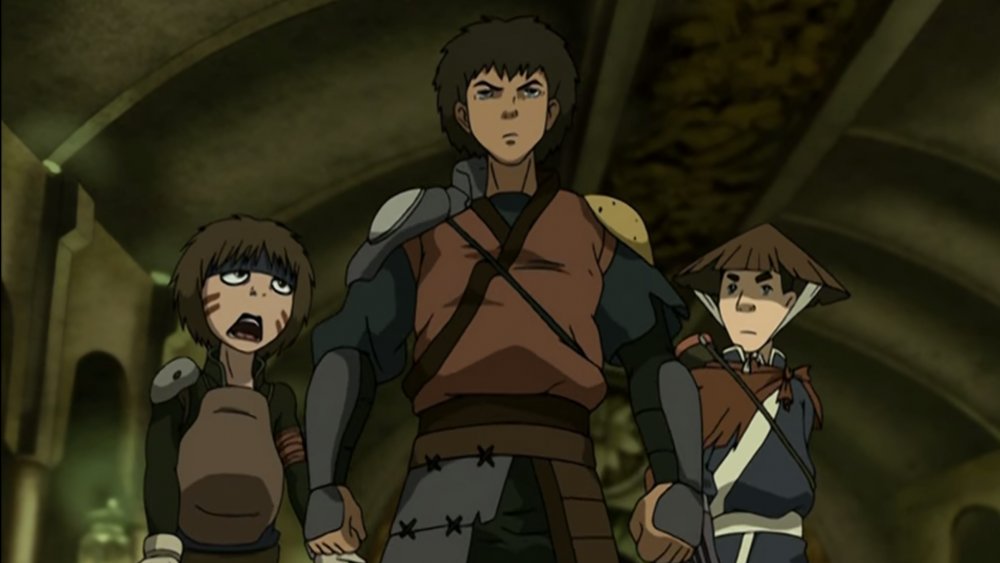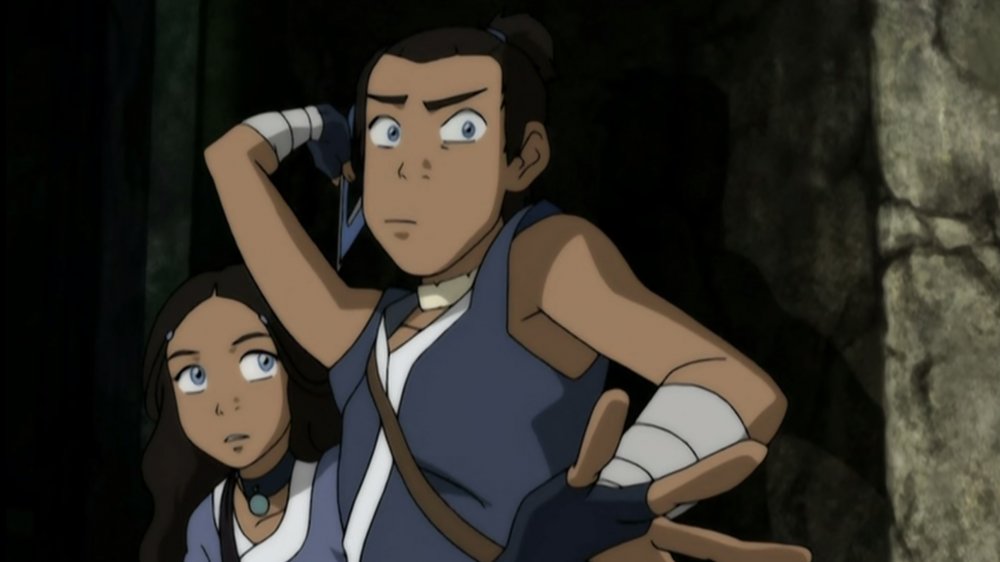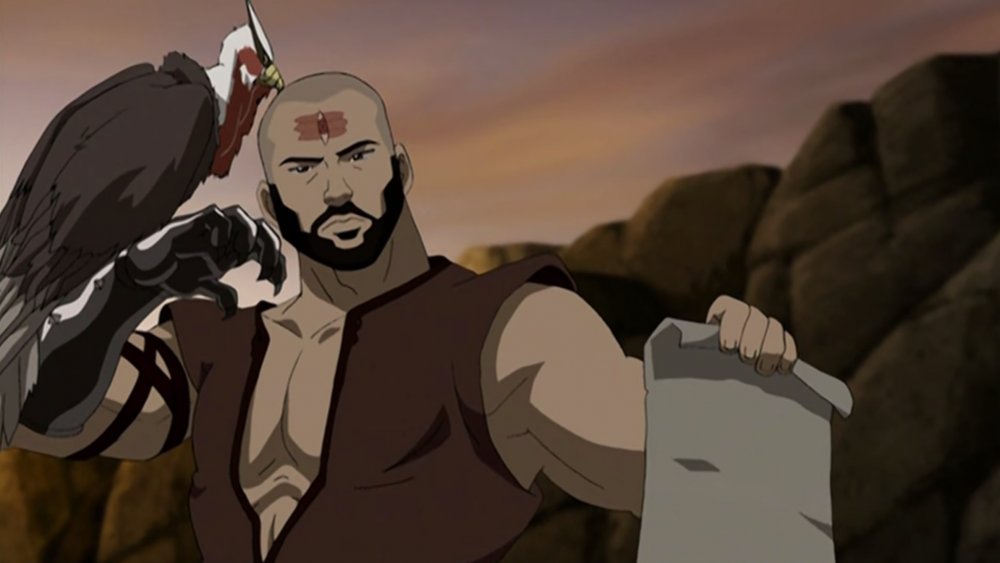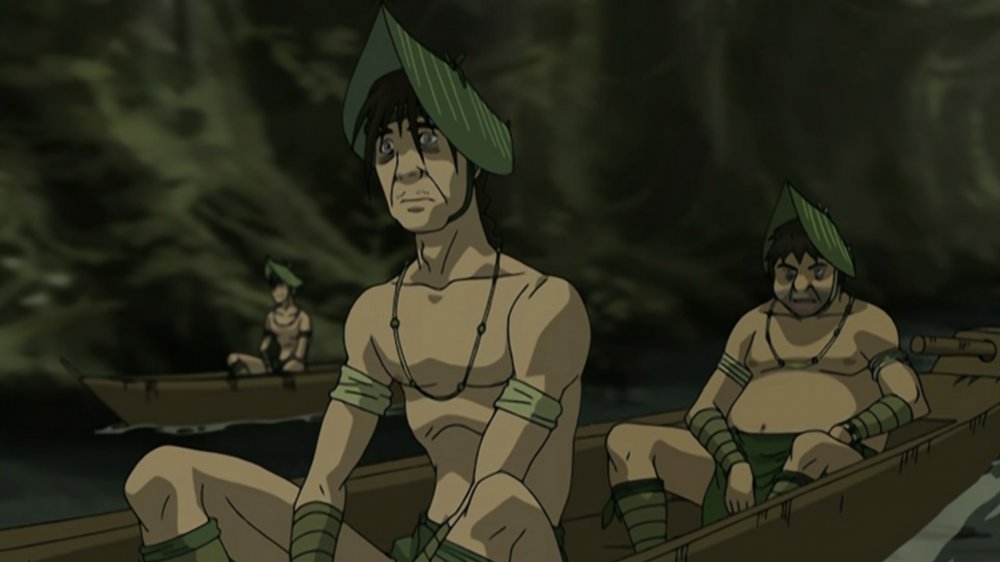Avatar: The Last Airbender's Biggest Unanswered Questions
Avatar: The Last Airbender premiered in February of 2005 on Nickelodeon and ran until July of 2008, creating one of the most beloved animated children's shows in modern television history. Not only do all three seasons boast a 100% critic rating on Rotten Tomatoes, but it was also one of the most-watched shows on Nickelodeon at the time, dominating the ratings. Some of the show's most praised elements are its world-building, the expansive lore, and well-defined characters, all of which serve to make the animated series an especially fulfilling experience. But seeing as the show only ran for three seasons, some ideas were left on the cutting room floor, leaving fans to speculate about certain unexplored or less talked about aspects of the Avatar world.
The Last Airbender wrapped things up quite nicely in its series finale; however, there are still some lingering questions that the show neglected to answer. From the uncertain future of fan-favorite characters, unexplored backstories, and historical contexts, here are some of the biggest questions left unanswered in Avatar: The Last Airbender.
What happened to Zuko's mom?
While Zuko's relationship with his father is explored from the start of the series, his mother is more of a mystery. In the episode "Zuko Alone," we get a little insight into Zuko and Azula's childhood in the Fire Nation, including their family dynamic. While Zuko's relationship with his father and sister has always been complicated, his mother was a source of compassion and protection for the young prince. However, Zuko would lose his mother without explanation after she suddenly disappeared from his life one fateful night.
In the series finale, the answer to this question is teased when Zuko demands to know his mother's fate from the ex-Fire Lord. While many fans were hoping for a big reveal, the scene changes before Ozai can answer, ultimately leaving the question unanswered. Did Zuko finally learn what happened to his mother? Or did Ozai simply refuse his son's questioning yet again?
While we never got a solid answer in The Last Airbender, fans finally received closure in the comics. After Ozai asked Fire Lord Azulon to pass over Iroh for the crown following his son's death, the Fire Lord was enraged. He commanded that Ozai kill Zuko as a punishment. To protect her son, Zuko's mother created a poison that could be used to kill the Fire Lord, and in return, she was banished from the Fire Nation.
Is Azula ever redeemed?
One of the most prominent themes tackled in The Last Airbender is redemption for one's past mistakes. The concept is explored through Aang's guilt for running away from the Air Temple and Iroh's transformation into a kind and gentle man following his war crimes. However, the most prominent example is conveyed through Zuko's character arc. Throughout the series, we get to see Zuko change from a conflicted teen struggling between good and evil to one of Team Avatar's most valuable members. With Zuko, the show brings forward the idea that even the most troubled individuals can change if given a second chance. So with this in mind, does Azula later redeem herself as well?
In comparison to Zuko, Azula doesn't really have many moments indicating a willingness to change for the better. By the time she's defeated in the last episode, Azula simply seems to be too far gone. However, according to series head writer Aaron Eshaz, the plan was always to give Azula a redemption arc of her own. On Twitter, he's mentioned that in the series' fourth season, Azula was going to have a redemption "longer and more complicated" than Zuko's had been. Of course, this never came to fruition, so we can only speculate on what happened after the series credits rolled. But in the end, it doesn't seem unlikely that Zuko helped guide his sister in a way similar to the way Iroh helped him.
What happened to Guru Pathik?
Guru Pathik first shows up in the episode "Appa's Lost Days" and helps the wayward sky bison recover from his long journey to the Eastern Air Temple. Soon after Appa begins feeling better, he tasks Appa with delivering a note to Aang, letting him know that the young Avatar has spiritual training left to do. Once Aang arrives, Guru Pathik teaches Aang about the seven chakras and instructs the young Avatar how to open each one. However, Aang leaves the training to save Katara, who he sees in a vision. Though he leaves before learning to open his final chakra, he does later learn to unblock it and master the Avatar State on his own without Guru Pathik's instruction.
This begs the question of Guru Pathik's fate. Did Aang ever return to The Eastern Air Temple to continue further spiritual training? After the episode "The Guru" in season two, Guru Pathik is never seen again (outside of hallucinations). In the episode, Guru Pathik said he was friends with Aang's mentor as the two were children, but Monk Gyatso was an old man 100 years earlier. So what does the future hold for a man who's survived for 150 years on onion-banana juice?
Does Toph make up with her parents?
Toph Beifong probably possesses the most brute force out of any member of team Avatar, so it can be easy to forget her complicated familial history. Because she was blind at birth, her parents had always been incredibly protective and controlling with her, falsely believing that she was helpless. Despite being a master earthbender, Toph's parents absolutely refuse to acknowledge their daughter's abilities. When confronted with the knowledge of Toph's greatness, they forbid her from helping to train Aang and further restrict her already limited freedoms. As a result, Toph runs away from home to help teach Aang and explore the world. Her worried parents hire Xin Fu and Master Yu to bring their daughter home, although the pair is unsuccessful in catching the little earthbender.
Though Toph admits to missing her parents, she never actually sees them again in The Last Airbender. Sokka and Katara are reunited with their father, but Toph never really gets any closure with her family. While it would be understandable if she weren't ready to make amends with her father and mother given then circumstances, we aren't given much insight into Toph's hopes for the future of her family's relationship. However, for fans eager to learn more about the Beifong family, the comics do provide some closure for Toph and her family, who rebuild their relationship Toph's father offers an apology.
What's up with the Order of the White Lotus?
The Order of the White Lotus is an ancient secret society that goes beyond the boundaries of the four nations. Throughout the show, we learn that many powerful individuals such as Iroh, King Bumi, Pakku, Piandao, and Jeong Jeong are all members. However, this isn't just a group composed of powerful benders and skilled fighters — the Order of The White Lotus has a network of members spanning across the entire world. This can be seen when Iroh and Zuko need to hide in the "The Desert," and Iroh presents a white lotus tile from a Pai Sho game to a local, signifying his membership which grants them safety and protection. And that was in a remote desert outpost with roughly eight buildings.
So if this secret society counts kings and master benders among its highest-ranking members and is spread so far across the world, how did it come to be? How do they choose their members? A few of these questions are answered in the 2020 book Avatar: The Last Airbender: Legacy of the Fire Nation. The book delves into the creation of the Order and its purpose. Other supplemental materials from art books, to novels, and even to The Legend of Korra all provide some insight into the Order and its purpose, though it appears unlikely that all of the Order's secrets will ever be truly known.
What exactly is Iroh's connection to the Spirit World?
One of the most interesting characters in The Last Airbender is Iroh. He was the heir to the Fire Nation Throne, a high-ranking general in the Fire Nation army, and even achieved the title of The Dragon of The West, earned by slaying the last of the dragons. But by the time the events of the show occur, he is a laid back, spiritual man who loves playing Pai Sho and drinking tea. Throughout the series, Iroh also demonstrates a unique connection to the Spirit World and can pick up on things unseen to those around him. For example, he can sense Avatar Roku's dragon overhead and determine that the Moon Spirit had touched princess Yue with just a glance.
Iroh's reverence for the spirits is so strong that he is rumored to have traveled to The Spirit World in his youth. Though this is just a passing comment made by Admiral Zhou, it warrants an explanation. Based on Iroh's demonstrated connection to the spirits, these rumors have some merit. So how exactly did Iroh enter the spirit world? Aang is able to do so because of his status as the Avatar, but Iroh doesn't hold this distinction. On a similar note, once Iroh managed to get into The Spirit World, what exactly transpired?
Why is Azula the only Firebender who can create blue flames?
Azula stands out as one of the most impressive firebenders in the show, and for a good reason. The Fire Nation princess is regarded as a prodigy, and Zuko himself notes that everything has always come easily to her. Her skills are shown off time and time again in combat, and the first sight of her signature blue flames is a sure sign that Azula means business.
But why exactly does Azula generate blue flames? No other firebender's flames are blue, just the standard red color. Her unique color-coding definitely makes her stand out when fighting among other benders, but there is never really any explanation as to why or how Azula's firebending is so visually different from everyone else's. Notably, in the episode "The Firebending Masters," Zuko and Aang are taught the origin of firebending from two dragons. During this encounter, the dragons' flames are shown to be a diverse range of colors, spanning from yellow to purple. With this in mind, it doesn't seem out of the question that a firebender could produce flames that aren't strictly red. However, Azula's bright blue flames are hers alone, and outside of the dragons, she is the only one to have a unique coloration to her bending. And to boot, Azula's never seen the dragons, unlike her uncle Iroh, her brother Zuko, and her nemesis Aang, all of whom produce red flames. So what gives?
What's the deal with the Lion-Turtle and energybending?
Everyone on Team Avatar agrees that the Fire Lord needs to be defeated to end the war, but killing him goes against every lesson that was ingrained into Aang by the monks. So to gain some insight and hopefully an alternative solution, Aang asks his past lives for guidance. Unfortunately, they all advise Aang that his duty is to put his spiritual needs second to the needs of the world. Just as Aang begins to resign himself to his fate, suddenly, out of nowhere, the Avatar comes face to face with a giant lion turtle.
The Lion-Turtle is an incredibly wise creature that predates the Avatar cycle, and the beast gives Aang some fantastic advice that just happens to solve his existential dilemma. The lion turtle informs Aang, "In the era before the Avatar, we bent not the elements, but the energy within ourselves." While this is a bit of a cryptic message, we later see Aang put this information in practice as he bends Phoenix King Ozia's energy, ultimately stripping the Fire Lord of his bending altogether. Many viewers walked away from this episode with questions: How did the lion turtle know the exact answer to Aang's problem? What is the lion turtle? What are the rules for energybending? Though both energybending and the lion turtle are explored more thoroughly in The Legend of Korra, in The Last Airbender, the lion turtle and its wisdom certainly raise more questions than answers.
What happened to Jet and The Freedom Fighters?
When we are first introduced to Jet, he is the fearless leader of a group of children known as the Freedom Fighters. The elusive group lives in treehouses and disrupts the Fire Nation to the best of their ability. Though Jet's lust for revenge set him down a dark course, the angsty teen ultimately redeems himself in the end by helping Aang reunite with his lost bison. During the mission, Jet is struck head-on by Long Feng's earthbending. In a bit of a surprise, Jet is badly hurt and doesn't stand back up, and Smellerbee and Longshot tell the Avatar crew to leave them behind with their leader. Jet even assures Katara, "I'll be fine," which Toph quickly confirms as a lie. This is the last time we see Jet and the Freedom Fighters. Considering the tone of the scene, it's very likely that Jet died. But did he?
In the episode "The Ember Island Players," Team Avatar watches a play recounting their group's travels. When Jet's heroic final stand comes along, Zuko is obviously surprised and asks if Jet died. Sokka replies with a tongue in cheek response that he doesn't know because "it was really unclear." So did Jet really perish, or did he and The Freedom Fighters manage to sneak off and build a new life together?
Did Sokka ever get his boomerang and sword back?
One of the longest-running gags in The Last Airbender is that Sokka's trusty boomerang always comes back to him, no matter the pickle he finds himself in. Sadly, in his final standoff with the Fire Nation, Sokka loses not only his iconic boomerang but also the one-of-a-kind space sword he crafted under the instruction of swordmaster Piandao. Having to sacrifice both weapons to save himself and Toph from falling to their doom, both fall somewhere to the ground below.
Considering that Sokka's identity is so closely tied to these two special weapons, it would be a real shame if he never reunited with them. Does the boomerang find its way back to Sokka again, or was the final battle against the Fire Nation the weapon's last hurrah? Similarly, the space sword was something Sokka poured all of his wit and creativity into crafting. There is truly nothing else like it. Unless Sokka comes across another meteor, it's unlikely he'll ever have the chance to make another sword to replace the one he lost. Considering the weapon's importance, one can only hope that Team Avatar scoured the land and found Sokka's lost sword.
Who exactly was Combustion Man?
Originally named "Sparky Sparky Boom Man" and later "Combustion Man" by Team Avatar, this relentless firebending assassin is one of the most terrifying entities in the Avatar universe. Unlike anyone else in the show, Combustion Man has the unique ability to create explosions using his mind. This ability is baffling to Aang and his friends, who are regularly hunted by Combustion Man, and seemingly the only way to stop the assassin is by aiming a shot directly at his weak point: the third eye on his forehead. Despite Combustion Man's incredible strength, the smallest pebble can disrupt his powers if it strikes him in just the right spot. But this only adds more intrigue into the assassin's capabilities and how they work.
So who exactly is Combustion Man? Though he works as a mercenary, and Zuko confirms that Combustion Man isn't his name, that's just about everything we know about the guy. By the time he's defeated, all we know is that he is a mayhem machine. The mystery surrounding the character makes him all the more terrifying without any explanation as to how his powers work or why precisely targeting his third eye is the key to stopping him.
What happened to the Swampbenders?
In the world of The Last Airbender, most of the benders live in their respective kingdoms. For example, most waterbenders live in either the Southern or Northern Water Tribe, earthbenders live in the Earth Kingdom, and so on. While there are some exceptions to this rule, like the waterbender Hama, who resides in the Fire Nation, this seems to be the general rule of thumb. Considering this trend, the swampbenders are a bit of an anomaly in the Avatar world and aren't given much explanation.
The swampbenders are a unique group of waterbenders that live isolated in the Earth Kingdom's Foggy Swamp. Unlike the Southern and Northern Water Tribes surrounded by ice and snow, the swampbenders live among trees and vines in the swamp and have adapted their bending style accordingly. Interestingly, when Team Avatar first meets the Swampbenders, Katara is surprised to learn about their existence, indicating that they are not formally recognized as part of the Water Nation Tribes. So how exactly did this group of waterbenders come to live in the swamp? Following the Hundred Year War, did the swampbenders return to their swamp, or did they expand to explore the world now that peace has seemingly returned to the four nations?
